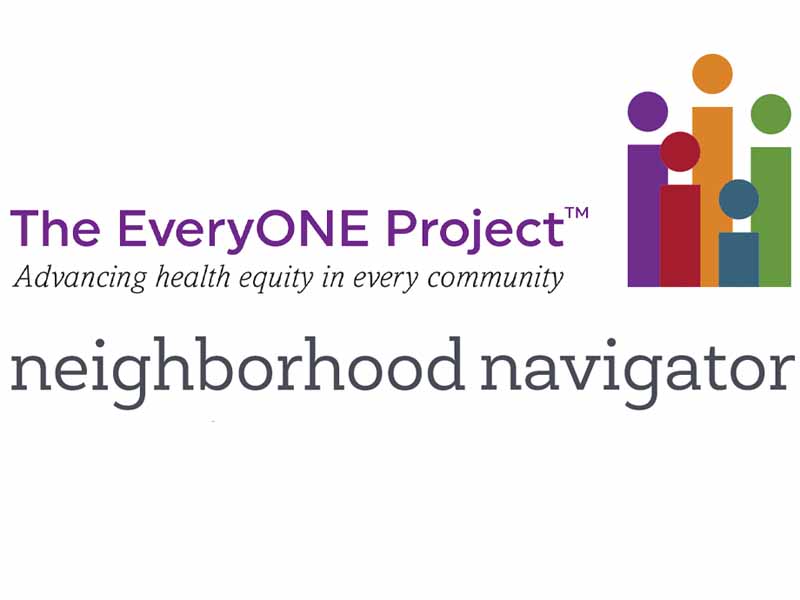The EveryONE Project Introduces Neighborhood Navigator
July 25, 2018, 01:10 pm Chris Crawford – The EveryONE Project from the AAFP has launched another useful tool to help family physicians address social determinants of health (SDOHs) at the point of care: The Neighborhood Navigator.
Family physicians and their practice teams can use this interactive tool during patient visits to connect them to the thousands of social services in their area that can provide help with such needs as food, housing, transportation, employment, and legal or financial issues.
Neighborhood Navigator, which is powered by Aunt Bertha, is equipped to accommodate more than 100 languages and is integrated with Google Maps to offer users step-by-step directions to community resources.
The EveryONE Project offers a series of training videos to walk family physicians through using the Neighborhood Navigator tool.

Physicians also can refer patients to a patient-facing version of the tool -- Neighborhood Navigator tool on familydoctor.org -- to enable them to locate services that meet their social needs on their own.
"Family physicians know the importance of addressing the social determinants of health," said Kevin Kovach, Dr.P.H., M.Sc., population health manager in the AAFP Health of the Public and Science (HOPS) Division. "However, this is often outside of their control. Most communities have organizations that provide services that can meet people's social needs, but it's extremely challenging to track this because they change regularly. The Neighborhood Navigator tracks this for you and keeps it up-to-date."
Nicole Williams, M.P.H., health education strategist for HOPS, told AAFP News that the Neighborhood Navigator tool allows family physicians to filter search results by category, patient eligibility and demographics.
She pointed out that family physicians also can create a practice account that all staff members can use to connect patients electronically and bidirectionally with a community resource and create resource profiles that can be easily accessed.
"This tool will optimize the way family physicians work with their patients by allowing them to refer their patients to ongoing services that will ultimately contribute to improved health," Williams said.
Story Highlights
Neighborhood Navigator Best Practices
According to Williams, the AAFP envisions family physicians and their medical staff using Neighborhood Navigator in the office while counseling patients once a need has been identified.
"At that point, family physicians have an option of making that referral for patients, emailing patients information about the community resource, printing something for patients to take home or offering patients the option of finding resources on their own from Neighborhood Navigator on familydoctor.org," she said.
Williams further noted that introducing Neighborhood Navigator to patients and briefly explaining its benefits will likely encourage patients to explore the tool on their own and, potentially, find additional resources that may be of use to them.
In addition, patients can create their own profile on Neighborhood Navigator, she said, which can be used to highlight specific programs and resources they would be using more frequently.
"I think it can also serve as a conversation starter for patients, as they visit their family physician, on the options or services they may find as they search for things independently," said Williams.
Feedback From Family Physicians
Family physicians who have used the software application on which Neighborhood Navigator is built -- Aunt Bertha -- have told The EveryONE Project team that they like it, it's easy to use and incorporate into practice, and its lists of resources are comprehensive in most communities, Kovach said.
Williams added that in some cases, family physicians also found the tool could be integrated into their electronic health record platforms.
"There are a few other online resource tools that have similar function, but many of them do not provide the full comprehensive list of resources that Neighborhood Navigator (Aunt Bertha) does," she said. "So, I think members who have used this before found it to be helpful in multiple ways and more comprehensive in data and functionality than other similar tools."
The EveryONE Project's Overarching Plan
The EveryONE Project focuses on providing family physicians and their practice teams education and resources, advocating for health equity, promoting workforce diversity, and collaborating with other disciplines and organizations to advance health equity.
According to Kovach, screening for SDOHs is a major component of The EveryONE Project.
"However, it's inappropriate to screen patients for issues that cannot be addressed," he noted. "Neighborhood Navigator helps family physicians address the issues that they identify."
Williams said The EveryONE Project's focus on giving family physicians and their teams education and resources is so they can act and confront health disparities head on.
"Neighborhood Navigator is a premium resource that will help family physicians extend their care for patients beyond the walls of their practice by providing the much-needed next steps in care using additional community-based programs," she said.
As for next steps for The EveryONE Project, Kovach said the AAFP will be issuing a comprehensive integrated toolkit for addressing SDOHs in primary care and advancing health equity through family medicine at the Family Medicine Experience conference in New Orleans in October.
"This will integrate our current tools -- the implementation guide Addressing Social Determinants of Health in Primary Care: Team-Based Approach for Advancing Health Equity and our Social Determinants of Health: Guide to Social Needs Screening Tool and Resources -- with the Neighborhood Navigator and another guide on working with your community to advocate for health equity," he said.
"We believe this is a comprehensive approach that helps address family physicians' patients' immediate needs while also helping to address the underlying drivers of health equity," Kovach concluded.
Related AAFP News Coverage
AAFP Working to Improve Community Health Outcomes
Academy Helps Create Health Care, Public Health Collaboration Framework
(7/3/2018)
HealthLandscape Introduces Population Health Profiler
(5/29/2018)